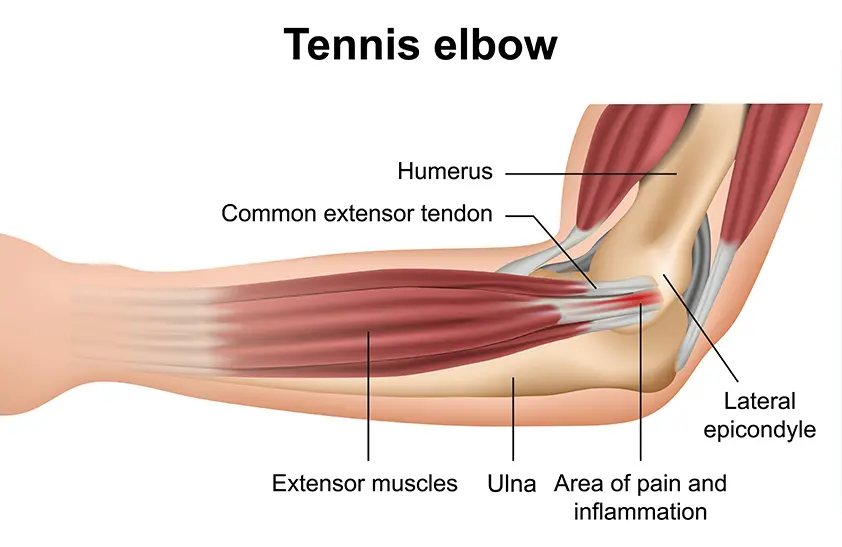Tennis Elbow Surgery (Tendon Repair)
When the tendons that join the forearm muscles on the outside of the elbow become inflamed, tender and painful, this is known as tennis elbow. Tennis elbow is usually caused by overuse and repetitive use of the forearm muscles, and their associated tendons. It can be caused by all racquet sports as well as other sports and activities in general.
Tennis elbow treatment usually consists of non-surgical care, including physiotherapy, braces or injections. Most patients will have a positive response to non-surgical treatment and their symptoms will settle within 6-12 months. In those with persistent symptoms, tennis elbow surgery is another treatment option.
Surgery is usually considered in patients with symptoms for greater than 6 months, and who have tried at least three months of physiotherapy with little or no improvement. In these patients, surgery has a 80-95% success rate.

Day of Surgery
Surgery can be undertaken on an outpatient basis (day procedure), but some patients will choose to stay overnight at the hospital. Either way, you will be provided with medicines to manage your pain at home.
Tennis elbow surgery consists of removing the area of diseased tendon and reattaching healthy tendon to the bone. A small amount of bone around your elbow may also be removed to improve blood flow and assist the area to heal faster.
Following the tennis elbow procedure, the incision is closed with dissolvable stiches and the area will be covered with a waterproof dressing so that you can have a shower without worrying about the incision.
After Surgery
After surgery, it’s important that your arm is rested for 1-2 weeks, so it may be temporarily put in a sling or even a splint. After this time the splint will be removed, and rehabilitation can begin.
Rehabilitation
It’s important to focus on post-operative rehabilitation, this includes:
- Exercises to stretch the elbow
- A gradual strengthening program
- A focus on shoulder strengthening

